Cargando...
Recursos educativos
-
Nivel educativo
-
Competencias
-
Tipología
-
Idioma
-
Tipo de medio
-
Tipo de actividad
-
Destinatarios
-
Tipo de audiencia
-
Creador
Lo más buscado
- Guía de fracciones
- Uso de c, s y z
- Educación sexual
- El Lazarillo de Tormes
- Arte abstracto para bachillerato de modalidad
- Actividades de lógica en sexto
- Ejercicios escolares para niños de 2 años
- Objeto digital de aprendizaje
- Experimentos cuarto
- Múltiplos de 3
- Letras N
- El método científico
- Simón Bolívar
- Carga eléctrica para cuarto
- Arte prerrománico
-
End-of-unit evaluation - The Hydrosphere
EduBook Organización
- 3022 visitas
The hydrosphere is the part of the Earth where water can be found. This water includes oceans, seas, rivers, lakes, snow, ice, groundwater and water vapour in the atmosphere. The Earth is the only…
-

-

Final self-evaluation 04 - Agriculture, livestock and fishing
EduBook Organización
- 3016 visitas
Look at the map and match the characteristic with the country: They fish for cod along the coast of Newfoundland. Their fishing industry is very active thanks to the Humboldt Current. Its fishing…
-

Resums - El dimoni emplomat
EduBook Organización
- 3018 visitas
1. Les converses i els missatges telefònics Quan parlem per telèfon hem de dir alguna cosa quan despengem, ens hem d’identificar i acomiadar-nos i , expressar-nos amb claredat i ser breus. Si deixem…
-
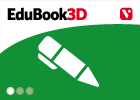
Answer. Vertebrates
EduBook Organización
- 3022 visitas
Remember what you have studied in this section and answer the questions: What do all vertebrates have? What do we mean by an articulated skeleton? Most vertebrates have limbs that allow them to move.…
-
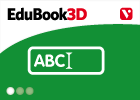
Complete. Animals
EduBook Organización
- 3023 visitas
Write the following words in the correct spaces: bivalves crustaceans echinoderms sponges internal mammals myriapods molluscs fish reptiles vertebrates The seven main groups of animals are , cnidarians,…
-

Answer. Cell division
EduBook Organización
- 3017 visitas
These drawings show the division of a zygote into two cells: What happens to the nucleus and the cytoplasm when the cell begins to divide? The two cells produced also divide in two, forming four cells,…
-
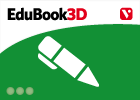
Describe. Los grupos sociales
EduBook Organización
- 3026 visitas
Fíjate en la ilustración y completa las actividades: Indica a qué grupo social pertenecen los personajes que aparecen. ¿Qué está haciendo cada uno de ellos?
-

Verdadero/falso. Características de los vertebrados
EduBook Organización
- 3016 visitas
Indica si las siguientes frases son verdaderas o falsas: Los vertebrados son el grupo de animales más numeroso. Casi todos los vertebrados poseen extremidades. Las extremidades reciben el nombre de…
-
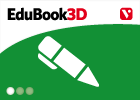
Observa. La yema
EduBook Organización
- 3019 visitas
La palabra yema viene del latín gema, que quiere decir "brote tierno de una planta". Actualmente, ese sigue siendo uno de los significados de yema. Fíjate en esta foto de las yemas de una…
Te estamos redirigiendo a la ficha del libro...













